What is a polygon?
Prepared by:
Joseph Malkevitch
Department of Mathematics and Computer Studies
York College (CUNY)
Jamaica, New York
email:
malkevitch@york.cuny.edu
web page:
http://york.cuny.edu/~malk/
I will be discussing the notion a of polygon, but for simplicity let me restrict the discussion to polygons in the plane.
Consider the geometric figures in Figure 1 below:

(a)
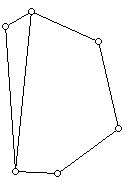
(b)
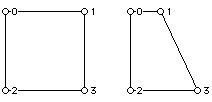
(c)
(On the left is a labeled quadrilateral, in fact, a square. The figure on the right has had its vertex 1 pushed towards vertex 0 keeping segment 01 parallel to segment 23. Both of these figures are quadrilaterals but "in the limit" vertices 0 and 1 will coincide. What should be the name we give to the resulting figure?)
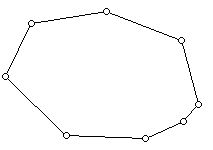
(d)
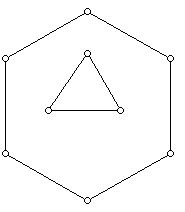
(e)
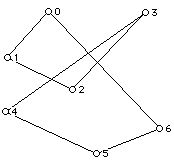
(f)
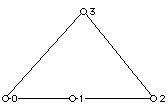
(g)
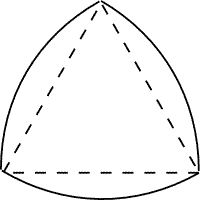
(h)
(Dotted lines can be ignored; the curved portions are congruent arcs of circles)
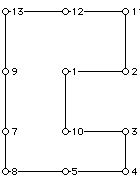
(i)
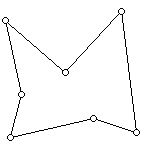
(j)
Though Euclid tried to define the words point, line, and some other "basic" geometrical ideas it is now understood that one can't give definitions for all the terms one might use in a mathematical system. Instead, one proceeds with undefined terms, axioms, and technical vocabulary (which builds on the undefined terms) and then uses logic to prove what are called theorems. So based on the improvements that Hilbert made to Euclid's work, one gets lots of "facts" about Euclidean Geometry, the results of proving theorems in Hilbert's reformulation of what Euclid did.
Euclid has results about triangles since they are among the "simplest" objects that are formed from straight line segments but he does not discuss the concept of convexity and implicitly works only with convex "polygons" and convex "polyhedra." Graph theory was not born when Euclid did his work, nor the field that has now come to be called computational geometry. Computational geometry, loosely speaking, deals with constructing algorithms that can be carried out with computers for doing various geometrical tasks. Looking at the issue of the computational complexity of various geometrical algorithms has not only clarified the computational issues but also has often resulted in rethinking of "classical" geometrical problems. However, in a general way modern geometry has moved away from metrical aspects of geometrical objects and paid more attention to "combinatorial" properties of those objects.
A good example of such a modern result is the Sylvester-Gallai Theorem, named for the British mathematician James Joseph Sylvester (who posed the question) and Tibor Gallai, the Hungarian mathematician who solved the problem asked by Sylvester.
Given a finite set S of points in the plane, if on every line determined by two points of S there is another point of S on that line, what must the set S look like?
Answer: All the points of S must lie on a single straight line.
But what is a polygon? Perhaps one should pay some attention to the fictional work of Lewis Carroll written by the mathematician C.L. Dodgson (in the book Through the Looking Glass):
'When I use a word,' Humpty Dumpty said, in rather a scornful tone, 'it means just what I choose it to mean — neither more nor less.'
'The question is,' said Alice, 'whether you can make words mean so many different things.'
So what should we define a polygon to be? The essence of what we want to capture seems to be:
a. As a graph, a polygon is connected.
b. Polygons are made up of straight line segments joining "dots" which sometimes are corners (the angle between the lines at the dot is not exactly 180 degrees).
c. At each dot, there should be exactly two line segments.
So we need some words that capture these properties. But like pornography, which the U.S. Supreme Court had trouble finding a succinct definition for, and resulted in the observation (1964) of Justice Potter Stewart, "I know it when I see it," you may feel you know a polygon when you see one.
So rather than try to find just the right set of words, let me observe the usefulness of being able to use adjectives to distinguish between different kinds of polygons as a source of "progress" in geometry:
convex polygon; simple polygon; non-convex polygon; rectilinear polygon; polygon with no three consecutive vertices on a line; regular polygon, equilateral polygon; equiangular polygon
Figure 1(h) is an example of a Reuleaux polygon (or Reuleaux triangle, for Franz Reuleaux) but this may confuse some since it breaks the basic idea that polygons should be built from straight line segments!









